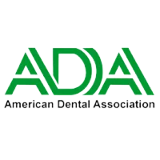When accidents happen, our oral and maxillofacial surgeons are here to help. Facial trauma refers to any unexpected force to the face that results in any injury to the teeth, bones, or soft-tissue of the face.
These injuries can affect vital functions, like breathing through the nose or blinking, and are associated with mishaps like car accidents and sports injuries, and typically demand emergency care.
Facial trauma can look like:
- Chipped, Loosened or knocked out teeth
If treated immediately, a loosened or knocked out tooth can successfully be re-implanted into the jaw. When that isn’t possible, a dental implant is a great option to replace a missing tooth.
- Broken jaw, eye socket, or other facial bones
The treatment of broken facial bones is unique, and requires special techniques to stabilize the bones so facial appearance, structure, and function can be restored. Sometimes, this involves wiring the upper and lower jaws together so that bones heal in alignment with each other. In other cases, plates and screws are used to secure bones in position. In all cases, function and aesthetics are priority.
- Injury to the soft tissue and skin of the face, including salivary glands or facial nerves
There are many small soft tissues in the face, some of them include salivary glands that help us digest food to facial nerves that help us smile. These procedures vary, but typically involve closing wounds with stitches or sutures, and applying medication to prevent infection.
Prevention is the best treatment for facial trauma. Wearing seatbelts and using protective gear like helmets and mouthguards can greatly reduce your risk of facial trauma.
If you ever find yourself in emergency care for facial trauma, make sure to ask for a consultation with an oral and maxillofacial surgeon so you receive the best possible outcome.












